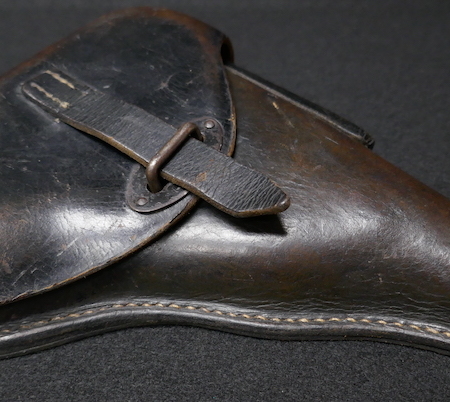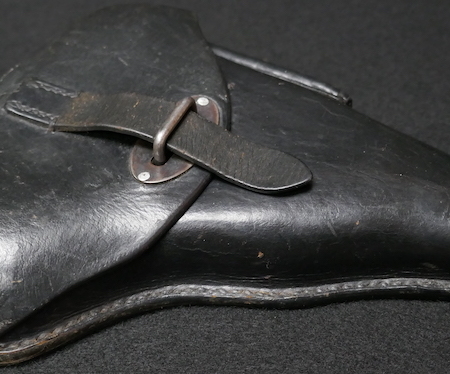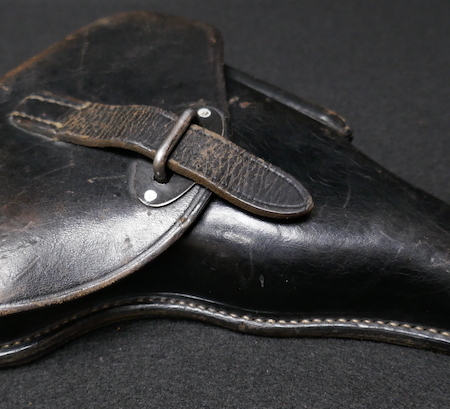Showing 91–99 of 1093 resultsSorted by latest
-

WWII German Luftwaffe Officers Dagger – Alcoso – M1937 2nd Model – Fliegerdolch – With Hanger – VGC Blade – Original
A super condition blade on this dagger. Maker is Alcoso, Solingen Comes with the Hanger it was always with. Price Tracked Shipped USA EU
-

WWII German SA Early Model Dagger – C.G. Haenel Suhl, Waffen-u. Fahrrad-Fabrik – RZM M5/71 OLC Hanger- VG Blade – PARTS Original (Offer Accepted)
Quite a decent condition Early Sturmabteilung Dagger. Haenel an independent manufacturer, was a producer of very good quality blades. within an arrow above C.G. Haenel Suhl, Waffen-u. Fahrrad-Fabrik. The C.G. Haenel Suhl, Waffen-u. Fahrrad-Fabrik was located in Suhl, Germany. “…,Many SA daggers were made during 1934-35 with Haenel’s full trademark on the blades…” The Sword and Knife Makers of Germany 1850-2000 Volume I, Carter A. P178 Stamped Hanger RZM M5/71 Reichszeugmeisterei OLC – Overhoff & Cie, Lüdenscheid Comment Really nice blade on this one, plenty of paint and a hanger. Free Tracked Shipping USA EU
-

WWII German Wehrmacht / Waffen-SS Walther PPK Soft Shell Holster – Late War – Original
Original soft shell holster for the Walther PPK Great worn condition holster
-

WWII German Wehrmacht / Luftwaffe Pistol Holster P08 Luger Very Early Brown 1938 – C. Weiss Braunschweig – WaA – Original
Original Luger 9mm Pistol Hardshell Holster Made in 1938, by C. Weiss in Braunschweig, Germany Acceptance Marks WaA not clear. Hard to find early stuff it still toggles closed the leather tab end, which has another part which has came off at some point but could be repaired, comes with it.
-

WWII German Wehrmacht / Waffen-SS Pistol Holster P38 Produced 1943 – JLN – Deutsche Lederwerkstaetten GmbH Pirmasens – WaA 145 – Original
Original Hardshell holster for the Walther P38 Pistol Made in 1943 – jln – Deutsche Lederwerkstaetten GmbH Pirmasens, Germany Stamped WaA 145 – Unknown Great condition holster with clear markings.
-

WWII German Wehrmacht / Waffen-SS Pistol Holster P38 Produced Early 1940 – Genschow & Co Berlin – WaA 286 – FPNR Panzer Jäger Abt 16 – Original
Original Hardshell holster for the Walther P38 Pistol Nice Early P38 Holster Made in 1940 – Firm Logo for Genschow & Co Berlin, Germany Stamped WaA 286 – Carl Busse Mainz, Germany Inside is what seems to be a field post number indicating where its former owner served, I made out, 26580 – B – Panzer Jäger Abt 16 (?) Great condition holster with clear markings.
-

WWII German Wehrmacht / Waffen-SS Pistol Holster P38 Produced Early 1940 – C.Heinichen Dresden – WaA 106
$450.00Original Hardshell holster for the Walther P38 Pistol Made in 1940 by C.Heinichen Dresden, Germany Stamped WaA 106 – Same Factory as above Great condition holster with clear markings.
-

WWII German Wehrmacht / Waffen-SS Pistol Holster P38 Produced 1940 – JKB – Carl Busse Mainz- WaA 613 FN Belgium – Original
Original Hardshell holster for the Walther P38 Pistol Rare Maker Made in 1940 by JKB is Carl Busse Mainz, Germany – Carl Busse, Fabrik fuer Ausruestungen aus Stoff u. Leder Stamped WaA 613 – FN Belgium Great condition holster with clear markings.
-

WWII German Wehrmacht / Waffen-SS Walther PPK Soft Shell Holster – Late War – Original
Original Soft shell holster for the Walther PPK Great worn condition holster




